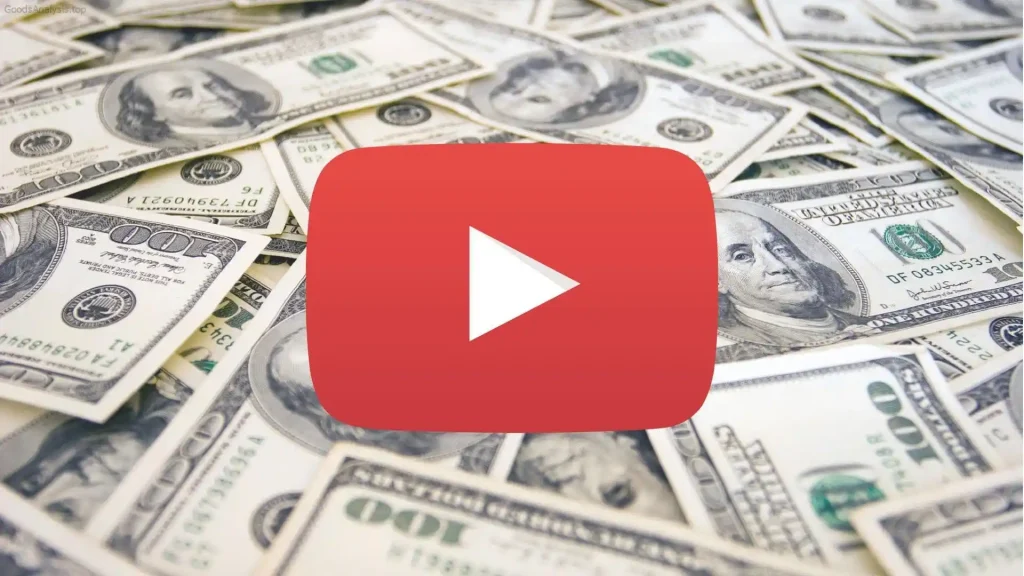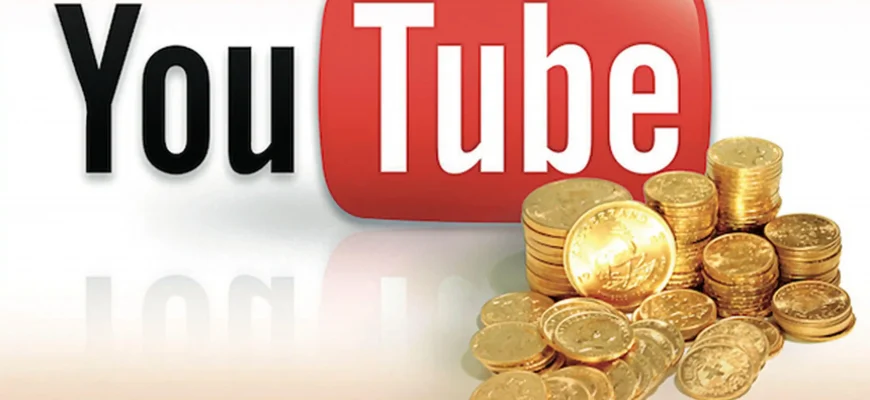YouTube has evolved from a platform for funny cat videos to a global marketplace that attracts millions of creators and businesses aiming to monetize their content. If you’re over 50 and considering starting your own YouTube channel—or perhaps already have one but need more insights on how to turn it into a revenue-generating machine—you’re in the right place. In this guide, I’m going to share the real, practical steps for making money on YouTube, based on reliable research, expert opinions, and real-world examples. Let’s dive in!
1. Understanding YouTube as a Business Platform
Before we start throwing around fancy words like “monetization,” let’s set the scene. YouTube is not just a hobby or a fun side project—it’s a serious business tool, and many people are using it to create full-time incomes. With over 2 billion logged-in monthly users (as of 2023), YouTube has a massive audience. The potential for reaching a wide range of viewers across different niches is unprecedented.
But making money on YouTube isn’t just about uploading videos and waiting for the checks to roll in. It requires strategy, consistency, and a bit of creativity.
2. How Does YouTube Monetization Work?
Here’s the good news: there are multiple ways to monetize your YouTube channel. Some methods require a large following, while others are more accessible even for new or smaller creators. Let’s break them down:
A. Ad Revenue (YouTube Partner Program)
This is the classic route to earning on YouTube. Once your channel meets the eligibility requirements (like having 1,000 subscribers and 4,000 watch hours in the last 12 months), you can apply for the YouTube Partner Program (YPP). If approved, ads will be placed on your videos, and you’ll earn a share of the revenue generated.
- Revenue potential: The money you make depends on various factors, such as your audience demographics and the types of ads shown. Creators generally earn anywhere from $0.25 to $4.00 per 1,000 views (known as CPM, or cost per thousand impressions). High-demand niches like finance or tech tend to have higher CPMs.
- Drawbacks: One of the biggest frustrations is that YouTube takes a 45% cut of the ad revenue. That means you’re only pocketing 55% of the earnings from ads. Not exactly a sweet deal if you’re just starting out, but as your views grow, it can add up.
B. Channel Memberships and Super Chats
If you have a loyal community, you can offer channel memberships. This allows your subscribers to pay a monthly fee (often between $1 and $10) to access exclusive badges, emojis, and content. In addition, if you livestream, viewers can send Super Chats—monetary donations that appear prominently in the chat.
- Revenue potential: If you have a dedicated audience, this can provide a reliable stream of income. For example, a popular livestreamer might rake in hundreds of dollars during a live session.
- Drawbacks: You need a substantial following to make this worthwhile. If your audience isn’t actively engaged, this might not be a major revenue source.
C. Sponsored Content
Brands love working with YouTubers because it’s a great way to get their products in front of a targeted audience. As a creator, you can partner with companies to create sponsored content—whether it’s a product review, tutorial, or a full-on promotional video.
- Revenue potential: This can be the most lucrative form of monetization. Sponsorship deals can range from a few hundred to several thousand dollars, depending on your audience size, niche, and engagement rate. Popular creators can earn $10,000–$100,000 or more per sponsored video.
- Drawbacks: Sponsored content can sometimes alienate your audience if it’s too obvious or disruptive. Always make sure the sponsorship aligns with your brand and values to maintain trust with your viewers.
D. Affiliate Marketing
Another great way to make money on YouTube is through affiliate marketing. This involves promoting products or services in your videos, and when viewers purchase through your affiliate link, you earn a commission.
- Revenue potential: This can vary widely depending on the product and commission structure. For example, tech products or software services might give you 10–30% of each sale. If you’re promoting something with a high ticket price, that can add up quickly.
- Drawbacks: The key challenge here is getting your audience to trust your recommendations and click your links. Over-promotion can come across as salesy, so it’s important to only promote products you genuinely believe in.
E. Merchandising
If you have a strong brand or community, selling your own merchandise (t-shirts, mugs, etc.) can be a profitable avenue. YouTube even integrates with platforms like Teespring and Spreadshop, making it easy to design and sell merch directly from your channel.
- Revenue potential: The amount you earn depends on how much you can sell and how much you mark up your products. Merchandise can offer higher profit margins compared to ad revenue, especially if you already have an engaged audience.
- Drawbacks: Creating and marketing your own merchandise can be time-consuming. Plus, the costs of production and shipping can eat into your profits if you don’t manage your supply chain effectively.
F. YouTube Premium Revenue
YouTube Premium is a subscription service that allows users to watch ad-free videos, access YouTube Music, and enjoy exclusive content. As a YouTube creator, you can earn a portion of the revenue from YouTube Premium subscribers who watch your content.

- Revenue potential: This revenue stream varies, but it can add up over time, especially if you have a loyal following. YouTube doesn’t release exact figures, but it’s estimated that creators receive about 55% of the revenue from Premium subscribers who watch their content.
- Drawbacks: YouTube Premium accounts for a small fraction of YouTube’s overall user base. So, while it’s a nice extra, it shouldn’t be relied upon as your primary revenue source.
3. How to Maximize Your YouTube Revenue
Now that we know the various monetization methods, let’s talk strategy. Here’s how you can increase your earning potential on YouTube:
A. Optimize Your Content for SEO
YouTube is essentially the second-largest search engine in the world, so understanding SEO (Search Engine Optimization) is crucial. Make sure to use relevant keywords in your video titles, descriptions, and tags. Research what people are searching for in your niche, and create content that answers their questions or provides value.
B. Be Consistent and Engaging
One of the most important factors for building a profitable channel is consistency. Upload videos regularly, and always engage with your audience through comments and social media. A loyal, engaged community will keep coming back for more—and may be more likely to support you financially.
C. Diversify Your Income Streams
Don’t put all your eggs in one basket. As we saw, YouTube offers multiple ways to earn money. It’s wise to experiment with different methods—ads, affiliate marketing, sponsorships, merchandise—so that you aren’t dependent on one income source.
D. Track Your Analytics
Use YouTube’s built-in analytics tools to track your performance. Pay attention to metrics like watch time, audience retention, and demographics. This will help you understand what content is working and where you can improve.
4. Common Pitfalls and How to Avoid Them
Making money on YouTube sounds exciting, but there are challenges. Here are some of the common pitfalls to watch out for:
- Burnout: The pressure to constantly upload can lead to burnout. Make sure you balance your content creation with personal time.
- Ad Revenue Fluctuations: Ad revenue isn’t always stable, especially with changing YouTube algorithms and fluctuating CPM rates. That’s why diversifying your revenue streams is essential.
- Copyright Issues: Using copyrighted material without permission can lead to videos being demonetized or taken down. Always use content that’s either original or properly licensed.
5. Global Perspectives: What Do People Around the World Think About Making Money on YouTube?
Here’s a snapshot of opinions on YouTube monetization from real people across different demographics:
- Carlos, 62, Mexico: “I’ve been making cooking videos for a year now, and while I don’t make much yet, the connections with my viewers keep me going. Monetization is slow, but I enjoy the process.”
- Tina, 29, USA: “Sponsorships have been the main source of income for me. The trick is to stay authentic and not just push products for the money.”
- Yuki, 38, Japan: “In Japan, YouTube is becoming a side hustle for many. I use affiliate marketing and am building a small but loyal audience.”
- Amina, 50, Egypt: “I’ve found that live streaming and super chats are great for me. It’s a fun way to interact with my community and earn at the same time.”
- James, 45, UK: “YouTube Premium revenue has been a pleasant surprise. It’s not huge, but it’s a nice bonus every month.”
Conclusion
Making money on YouTube is entirely possible, but it requires strategy, creativity, and hard work. Whether you’re hoping for a small side income or aiming for YouTube stardom, remember to diversify









